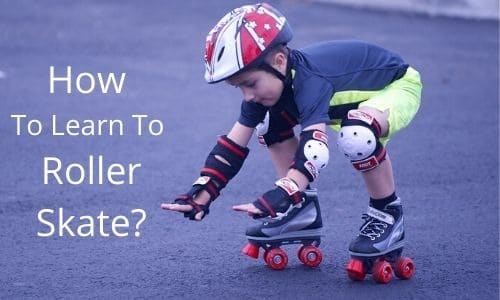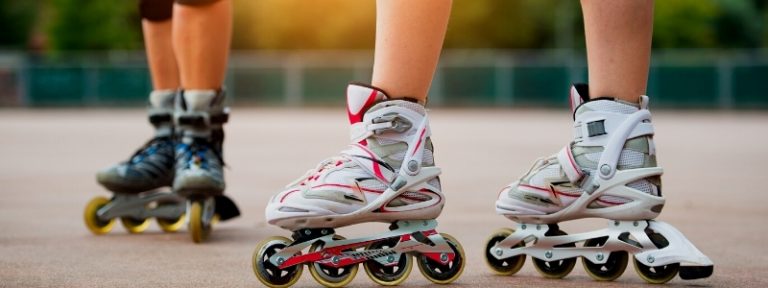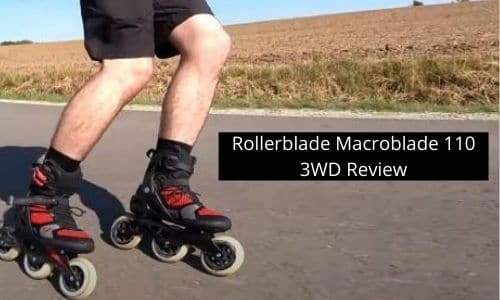How to Learn to Roller Skate? [Beginner’s Guide]
( If you purchase through our sponsored links, we may receive a small commission at no extra cost to you )
Roller skating is a sport that is widely popular among youngsters. Adults, too, are a part of it but in lesser numbers. The secret to acquiring complete control over your loving roller skates is practice, practice, and more practice. Technique, posture, the surface, and even body movements play an important role.
Sports activity generally leads to the betterment of an individual’s health. But the precision and posture maintenance that roller skating involves proves to impart added improvements on fitness levels. The best part is when you have mastered the sport. You will be able to twist and turn, make swift changes in directions, and even be able to travel on one roller skate smoothly.
The beginners must be wondering, “how to learn to roller skate?” It can be a cumbersome process, but once you learn it well, you won’t be able to resist the skates. Before actually telling you how to roller skate for beginners? You must learn skating facts and must have the all-important pieces of equipment: one of the best outdoor skates and protective gear, especially for outdoor skating.
Being a beginner, the odds are you will face plenty of falls before achieving even minimal balance. Get a pair of elbow pads, knee pads, and a helmet. Once your roller skating skills enhance, you will want to perform some tricky moves. Better be safe and keep a mouthguard in handy for such situations. Also, NEVER skate barefoot. You will end up with nasty infections on your feet due to the sweat.

Here is a step-by-step guide on what you should focus on priority-wise. There are many factors involved. Balance, posture, turning, stopping, speeding, etc. Keep reading to grasp some knowledge on how to learn to roller skate.
Step 1 – Find Your Balance
As a beginner, first and foremost, one must learn to balance on roller skates simply. Struggling and balancing is one thing. But balancing with minimal shaking and while relaxed is what you need to achieve. Focus on figuring out your comfortable standing stance while in the skates.
Bending of the Knee
People who indulge in roller skating must acknowledge the number one thumb rule. Always keep your knees bent by a small angle. Also, make sure you have a slight squat. This gives you a strong foothold of the surface and even a sense of control over your balance.
The only time when you can straighten your knees is when you are moving freely with no turns or stops. When you need to stop, turn, reduce, or to increase speed, that is when you will naturally have to bend your knees.
Point Your Toes Outwards
While you move around on the roller skates, you will portray a mild squat, and your toes also need to point outward. Whereas when you decide to reduce speed or stop altogether, bending your toes inward can help.
This is basically a pressure game. You use your toes to generate pressure on your lower body, and this helps you in navigation choices. Wondering why the toes are given so much responsibility? Because it’s roller skating and it’s all about foot movement.
Arms and Elbows In a Frontward Posture
This factor will ensure that your gravity remains grounded. Your bodyweight is allowed to use its force in a forward direction, and this helps you move as your desire. A slight lift of your arms and elbow (tucked inside) is enough till you actually understand its effectiveness. You don’t want to go ram into a wall due to uncontrollable speed. Do you?
Related: Roller Skate Learning Basic Video
Step 2 – Identifying the Right Posture
This is something that comes with practice, but the real key is to have a relaxed attitude when roller skating. Posture only comes when you know what way you are most comfortable standing in. This cannot happen if you are stressed and worried.
T-Position
You must be thinking about how you are supposed to stay relaxed when you know you are losing balance. Here is a tip for you – Start standing in a T-position when you are not skating (obviously with your roller skates on).
In short, reduce the width between your feet such that the side-heel of one plus back-heel of the other are in contact. Now, this only helps achieve balance on posture for your lower body.
What about the upper body? Simply keep your core tight and make sure your knees are slightly bent. Take a short 20 meter round and come back to the T-position. Keep doing this with an intention to enter and exit the T-position comfortably.
Squatting Practice
As a beginner, a critical point on your checklist must be your constant squatting position. Diverting from the squatting pose will deprive you of control over speed and turns.
Step 3 – Stopping Your Motion
What about stopping? It isn’t as easy as getting into the T-position. There are two primary routes to practicing the art of stopping while skating.
T-Stop
All the stress must fall upon your front foot. While in motion, you need to place one of your feet ahead and simultaneously bend the knees. Make sure your core is tight during this movement, as this provides the force you need to stop.
What about the back leg? The back leg has to be in a horizontally moving posture. As you are moving frontwards, friction will be created, and you will stop in an almost perfect T-posture.
Plow Stopping
If you are skating at high speeds, then forget about this stopping method. But, if you are a slow skater, then it would work. Your chin has to be facing upwards, you should be squatting mildly, and your shoulders must be in a straight direction.
While in motion, start spreading your legs and end by pointing your toes inwards. The motive here is to use your body weight on the floor. To get a hold of your upper body weight, you must push your semi-inverted legs in an outward direction.
Dirty School of Skate’s Video On Stopping
Step 4 – Forward and Backward Skating
You must have already understood the 3 pillars of “how to roller skate for kids and beginners?”. But you may yet be moving and propelling in the desired direction in a haywire manner. For this reason, you will now read on the correct way to move forward or backward while roller skating.
Forward Skating
Start by moving one leg in a forward motion but an outward direction (make a T-shape). Now that you started flight, you also need to continue. For this, you need to produce now the same forward motion for the back leg but in an upside-down T-shape. Now that you have gathered enough speed, you can get your back foot ahead beside the front leg and continue rolling. When you need to accelerate, follow the same motion on both legs.
Backward Skating
Backward skating involves the thigh muscles to be tight and the toes to be facing inwards. Check out some videos and lessons if you are struggling to picture the posture.
Your buttocks need to pop out while you look behind and take baby steps. Crossover backward with your right leg and then with your left leg. You need to push then to maintain speed and follow the same movements to increase speed.
Skating Videos
Frequently Asked Questions
Is it hard to learn how to roller skate?
Like cycling or swimming, skating may seem hard to learn at first. But, with proper practice and guidance, you can easily master roller skating within a stipulated time period.
How long does it take to learn roller skating?
It depends. You may learn so quickly through practicing for an hour to 2-3 days. Whereas, your friend may need a week or even a month. Normally, if you are a sports guy and younger, you can master better than the ones who are not physically fit or getting old.
Conclusion
Being a newbie, you must not speed or go for fancy drifting turns. Focus on your posture and overall balance. Once you focus on these, you are ready to practice forward skating and stopping. Most importantly, keep your body low throughout the skating session. The low posture allows you to push and generate more power, thus longer and less-effort skating.
Final Advice for Roller Skate Learning
· Always check your wheels and toe stoppers (if they exist). Make sure they are not loose, or you will for sure land up breaking your bones.
· Do not skate in rainy weather. In case your roller skates do get wet, then do not let moisture collect. It could lead to rust and further damage the metal parts.
· Being a beginner, never roller skate downhill. The odds are that the force would prove too much for you to handle.
. Always choose one of the best roller skate brands. (i.e: impala)
Hope that helps to learn to roller skate. Learn quickly and enjoy the momentum of skating.



![Roller Skating Facts [Basics & Interesting]](https://sportstotry.com/wp-content/uploads/2020/09/skating-facts.jpg)


![7 Best Roller Derby Skates 2023 [Don’t Buy Before Reading This One!]](https://sportstotry.com/wp-content/uploads/2020/11/Best-Skates-For-Roller-Derby.jpg)
![4 Best C7 Skates Review [Cute, Cool & Lightest Ones!]](https://sportstotry.com/wp-content/uploads/2021/01/c7-skates-review.jpg)
Learn you roller skates! Take care of them! I may be OVER indulging on maintaining my skates–but I feel it’s for my benefit. I skate three four fives times a week plus competition events! When get home I wipe down my skate and reclean the skate wheels. Remove the wheels and inspect the bearing, are there ANY “funny” sounds from the bearings. Put wheels ‘back on and skates in case and store. Once a month I “tear” everything apart and clean and inspect bearings and parts. It sounds like a lot of work each time you go skating but I’ve found it saves a hell of a lot of head acks later!! Why not–YOU have invested a lot of money in your skates so take damn good care of them and they will always serve you!!!!! My roller skates are over 77 years old and are in excellent condition—-and Ill keep them in excellent condition—–they were a worth while investment and what to keep that investment forever!!!!
Really Helpful…Thanks!
You can learn to roller skate at your local rink with an instructor OR learn how to roller skate in your home!! How!! Put on your roller skates, lace them firmly. Two thinks to always to remember are (1) body position–head held high, back and shoulders straight and back (2) knees bent- how much- stand straight look down bend knees and when you see about two inch’s of the toe tip good enough. I cheat on this one–my skate toe has a thread about two inch’s that I use. Now stand up on CARPETING and WALK holding onto chairs or what ever for a count of two. Bring up other skate. Lead off with that skate and holding onto chairs continue until YOU feels comfortable ( this is body balance). Go into your kitchen and holding onto the counter tops roll and bring up other foot–keep doing this until YOU feel comfortable. Now lets try rolling on the kitchen floor but hold on to the counter. Now WHEN you feels YOU should try rolling skating on the kitchen floor do so—-but don’t be afraid to hang on to something UNTIL you feel comfortable!! Now it takes practice practice and practice—maybe even at the local roller rink!! Any questions, let me know
Hey Dutch Lepeska, many thanks for sharing your super simple experience about how to roller skate. The tips are great!!